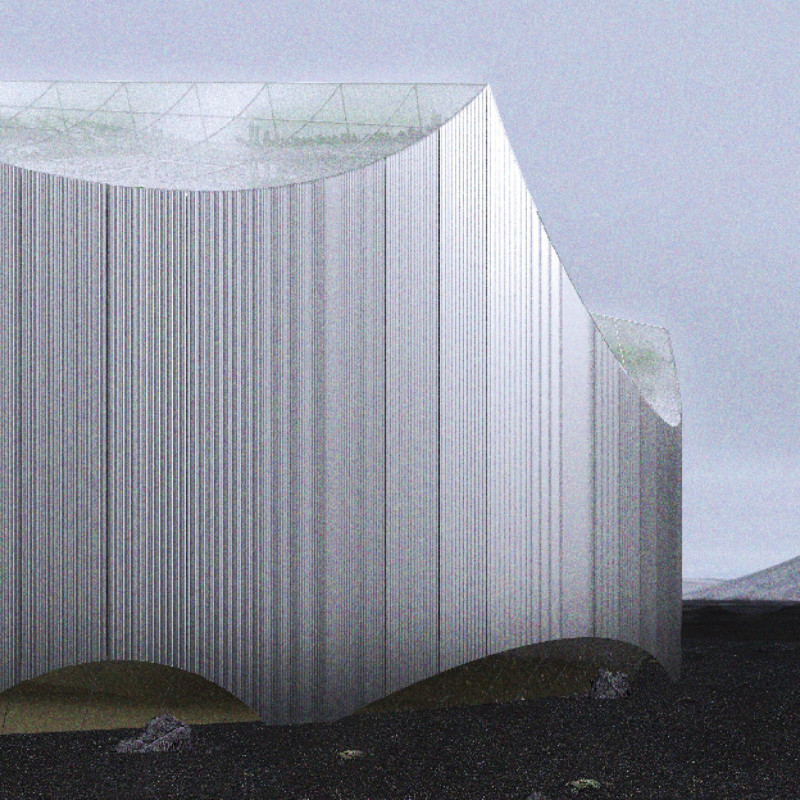5 key facts about this project
The restaurant features a circular design, carefully set into the landscape. This structure encourages a close connection to nature while providing an intimate atmosphere for dining. The design concept emphasizes the relationship between the built environment and agricultural practice, allowing for an experience that intertwines food and the environment.
Rammed earth core
At the center of the restaurant is a core made of rammed earth. This material offers strength and efficiency. It helps regulate temperature, creating a comfortable indoor climate. Using rammed earth connects the building to the site, showcasing local resources and creating a warm, natural feeling inside.
Hanging greenhouses
Above the main dining area, hanging greenhouses contribute to the restaurant's function. These greenhouses allow for the growth of fresh produce right on site. This design choice connects diners to the food they consume, promoting a greater understanding of the source of their meals. The greenhouses also enhance the aesthetic appeal, bringing greenery into the dining experience.
Scalloped ceiling
The restaurant features a scalloped ceiling, which serves to maximize natural light while creating an interesting spatial quality. This roof structure allows the hanging greenhouses to adjust and optimize conditions for plant growth. The unique shape adds to the overall ambiance, making the space feel dynamic and inviting.
Contrasting materials
The exterior is clad in corrugated aluminum, providing a visual contrast to the earthy texture of the rammed earth core. This choice of materials gives the building a contemporary edge while ensuring it stands up to weathering over time. The combination of raw, tactile surfaces and sleek, modern finishes helps create a harmonious design that reflects both traditional and modern influences.
The circular layout promotes smooth circulation within the restaurant, allowing for unobstructed views of the surrounding landscape and reinforcing a connection to the environment. This thoughtful interplay of design elements contributes to a unique dining experience, deeply rooted in sustainability and local agricultural practices.






















































